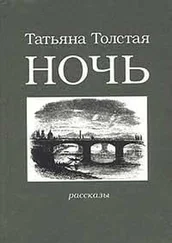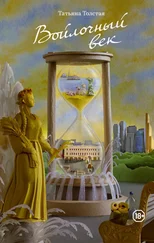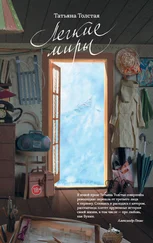It was like another child in our family—seven of us, plus Kombucha. Us kids, who were blessed to be born with legs and arms, with eyes—and him, prematurely born, eyeless, unable to move, let alone crawl. Yet he was alive. And he was ours. Nanny’s baby. (When Nanny died, there was no one to take care of him. One of the sisters took him in, but forgot to water him as needed; he started to wither, to get murky, and soon decomposed and died.)
Nanny used to place Kombucha on the dacha windowsill; his appointed neighbor was Onion, a mayonnaise-jar resident whose fibrous, whitish roots were dipped in water. The windowsill was where the empty glass jars from the green peas were drying, along with the jars from Nanny’s favorite tomato sauce, which she insisted on calling “red stuff” and nothing else. Our kitchen was dark, sunless, and remote, because our dacha had been built by an imbecile.
All the sun, all the wind, all the flowers were over there, outside the window.
—
Over there, outside the window, was where the neighbor’s property began; it had been like home to us, but it was no longer accessible. Over there, at the neighbor’s house, we used to rent the entire first floor until Mom bought this dacha of ours, the one built by an imbecile. The neighbor’s plot was enormous: there was a field with potatoes, another one with wild bluebells, and a “third field,” where nothing in particular was growing, it was just there. There was also an apple orchard, a lilac garden, a zucchini patch, a thicket of yellow acacia, a grove of giant knotweed, an unusually large and thick birch tree, a spruce forest that rolled down the western hill, and a pine grove that rolled down the eastern hill. In the pine grove, under a thick carpet of red needles, you could make out the faint outlines of small graves, which resembled suitcases overgrown with moss: the original property owner used to bury his favorite dogs there when they died. All this, this entire world, used to be ours, but now it was cut off by a chain-link fence and we could no longer go there.
At the top of the hill stood the house itself—“the White House,” as we used to call it. The apocryphal story goes like this: Many years ago, at the end of the nineteenth century, a certain Mister Dmitriev paid a visit to this narrow isthmus—a tongue of land between two lakes—on a hunting trip with his son. The younger Dmitriev so loved the pine grove and the sandy lakeshores and the thickets of willow herb and blueberry bushes that he said to his father: “When I grow up, I’ll build myself a house here.” Junior grew up, became an engineer, got rich and bought the isthmus; on one of the pine hills he built a hunting lodge (it was still there in my childhood but later burned down), and on the other—the White House. The hunting lodge was entered through a small porch, and there were deer antlers hanging over the front door. The White House had two entrances: the back one, through the porch, for routine comings and goings and deliveries, and the front one, through the portico with the white columns; the columns were of wood, covered with stucco. The second floor was a loft with slanted ceilings. They say that the façade was a replica of Tatyana Larina’s house in the 1915 staging of Eugene Onegin.
If you’re a young lady with a braid, of an age of yearning and expectation, and it’s a white night June evening of unfading light, and no one is sleeping, and there is no death, and the sky seems full of music, it feels right to go stand on this portico, hugging a stucco-covered column, watching the sea of lilac bushes cascading down the steps, and breathing in the scent of its white misty foam, the scent of your own pure flesh, the scent of your hair. Life will deceive you later, but not just yet.
We used to live there on the first floor, and I remember the mysterious shadows of the common rooms, the Dutch stove with plain dark-green tiles, smooth and monochrome. Owing to someone’s blunder, or whim, perhaps, two of the tiles were dark blue, and this imperfection evoked a certain pity—or, in other words, love. I remember the basin perched atop a washstand along with a timeworn pitcher, and the arched windows of the upstairs loft—those bedrooms weren’t ours, they certainly didn’t smell like us; when invited, we used to walk up the grayish-blue staircase to get to them. Up on the second floor, between the window frames, there were small shot glasses filled with dark-burgundy and dark-orange liquid; I used to know what they were for, but I’ve forgotten. They’d say it was some kind of poison—either to kill the flies, or to prevent the windows from freezing over in wintertime. When I was a kid, I feared the word “poison,” and I don’t like it now. I used to imagine poison to be the color of port wine, with the stifling, sugary smell of cough syrup.
They also had a trumeau mirror; I was dazzled by this nocturnal-sounding word—“trumeau.” On a wall hook was Aunty Vera’s robe of pale lilac, the color of sighs and murmurs, of white nights, whispers, and otherworldly emotions. Its scent was so enchanting that it nearly stopped your heart. It smelled of the White House, of 1914, of faraway, virginal, immaculate woods.
The hill upon which the White House stood poured down, if you will, eastbound and westbound. At the east side, surrounded by pine trees, stirred a large blue lake with the Finnish name Hepojarvi, still unspoiled and unlittered: the worst one could find at this wonderful lake were thickets of alder—a nasty weed of a bush, the back of its leaves covered with red dots, like warts.
To the west—down a steep path from the top of the hill—was a quiet little black lake, or, more precisely, the bay or a bend of the big lake, though we used to call it “the Little Lake,” considering it the independent younger sibling of Hepojarvi. Growing in it were yellow water lilies that smelled like mermaids. If you dangled your arm off the edge of a boat, submerging it deep enough, and then yanked at just the right moment, you could pick a water lily by its two-meter-long stem, and then, provided you tore the stem apart correctly, you could—and absolutely should—make a cold, wet necklace out of it. In the evenings, the black-mirrored surface of the Little Lake reflected a long-blazing yellow Finnish sunset and fir trees seemingly carved from black paper. A couple more toadstools underfoot and you’d have an Ivan Bilibin illustration. In the daytime the firs retreated, disappearing somewhere, and the waterside was golden-green again, happy. There were leeches in the lake; we used to catch but also fear them. There were water striders that ran across the smooth plane of the water, dragonflies that hovered above it, and on the shore there was a bathhouse where Dmitriev Junior used to bathe—the nineteenth century was slow to leave these shores; it hesitated, showing us how it was before the First World War: the green, blue, sunny world of the not-yet-killed.
Lucky for Junior, he wasn’t killed in that war, or during the purges that followed. They said that he was a VIP in the world of energetics, that he participated in the GOELRO plan, which sought to bring electricity to the entire country, and that this is what saved him. Russian Wikipedia says that in April of 1937 “the main engineer of GOELRO, G. A. Dmitriev, was arrested. Death by firing squad on September 14th.” But this must have been some other Dmitriev, perhaps from Moscow. Neither the age nor the place of residence matches up with ours. If this had been Junior, then they would have come after his heirs, killing them or sending them to work in the uranium mines; the White House would have been turned into some kind of state-run tuberculosis clinic for the bigwigs of the trade unions, and they would have been hacking their profsoyuz snot all over the lilac garden.
Читать дальше






